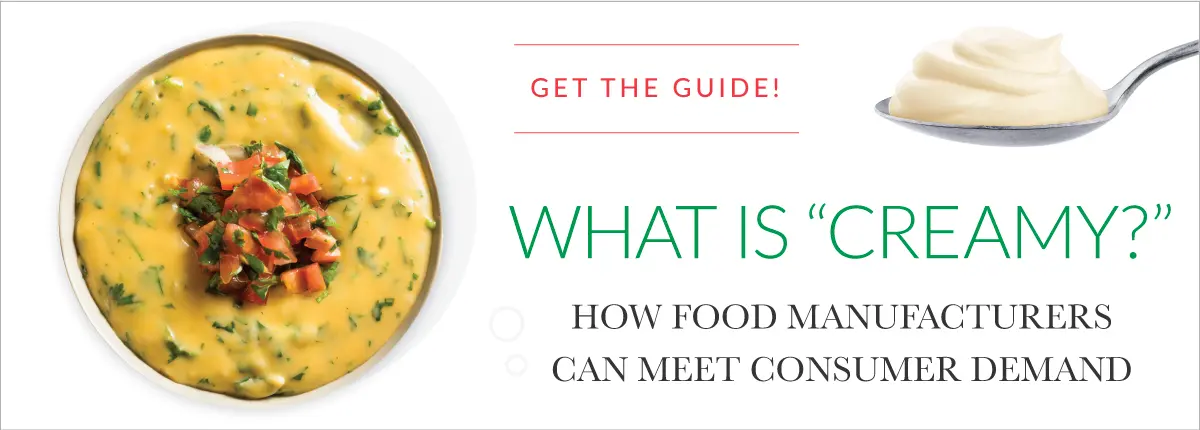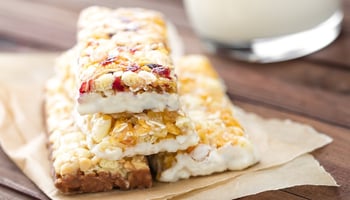
Move over corn flakes! Even though cereal remains the top breakfast food, sales have remained relatively flat in recent years. As consumers move toward healthier lifestyles, they’re taking note of the labels on many of the most popular breakfast cereals and realizing just how much added sugar and empty calories they contain.
What’s taking the place of cereal at the breakfast table and on the go?
Drinkable Yogurt Sales See Robust Growth
Demand for more protein, improved nutrition and convenience is driving sales growth of drinkable yogurt as a way to fuel the body at the start of each day.
Retail sales of clean-label drinkable yogurt formulations have grown, with many new products coming on the market. Its popularity is expected to continue at a projected compound annual growth rate of nearly 5% through 2025.
RELATED: See How New Label Standards Create Reformulation Opportunities for Food & Beverage Manufacturers
Benefits of Drinkable Yogurt
With their grab-and-go convenience, drinkable yogurt and fruit smoothies containing non-fat yogurt are becoming a part of many people’s daily routines, and have greater nutritional value than most other popular breakfast options. Yogurt is an excellent source of:
- Lean protein — an alternative to high-fat breakfast sausage and eggs
- Branched chain amino acids — essential nutrients for the human body
- Calcium and vitamin D — shown to improve bone health and help prevent osteoporosis
Studies also show yogurt can help reduce the risk of high blood pressure by as much as 50% — a major contributor to heart disease. Drinkable yogurt and other forms also increase a person’s feeling of fullness and satiety which can lead to consuming fewer calories and result in increased weight loss.
In addition to yogurt’s ability to help strengthen and build muscles and control appetite, this food ingredient can also help consumers regulate digestion. Food manufacturers can leverage these benefits in their formulations, making it easier to appeal to clean label initiatives and to comply with recently updated label standards.
Yogurt Flavor Profile Trends
The benefits of yogurt consumption are clear. But the refrigerated section of most grocery stores is becoming increasingly saturated with various brands trying to gain market share. When featured alongside traditional yogurt in refrigerated beverage displays and in convenience stores, drinkable yogurt is a clear differentiator.
While drinkable yogurt already stands out from spoonable forms in the food and beverage industry, there are additional ways these products can capture the attention of shoppers. In the past, mainstream flavors such as vanilla, strawberry and other fruit flavors were the norm, but innovative manufacturers are offering indulgent and appealing flavor profiles with reduced sugar and fat.
Ethnic and artisanal flavor trends in other food products are carrying over to the dairy aisle as well. Baobab has shown up in yogurt; a fruit that comes from a tree native to the African continent, Australia and Arabia, and is considered a superfood that is recognized for its vitamins, minerals and immune health benefits.
Aloe vera boasts its own medicinal properties, and is increasingly being featured in Japanese-style yogurt beverages as well. Additional flavor profiles gaining popularity include toasted nuts, ginger, coconut, cheesecake, pomegranate, lavender, chai, rhubarb and even jalapeno for those with more adventurous taste buds.
The growing segment of consumers who consider themselves foodies is helping drive the growth of unique flavor profiles. Their influence on average consumers is strong, and an increasing number are willing to try new things and are equally willing to pay a premium for specialty products.
Overcoming Yogurt Beverage Formulation Challenges
Consumer demand for drinkable yogurt goes far beyond breakfast and is also helping food manufacturers expand into other dayparts. With its creamy, satisfying texture and numerous flavor profiles, the product can be positioned as an indulgent, better-for-you dessert that can be enjoyed as a refreshing treat any time of the day. Its low fat and high protein level also makes it a go-to option as a meal replacement and post-workout food.
Maintaining proper viscosity, minimizing costs associated with fresh dairy, and increasing shelf life are among the challenges that food manufacturers face when formulating these popular beverages. However, by using dried yogurt powder, food and beverage formulators can achieve these goals and capitalize on the growing popularity of healthy beverage products and increased demand for yogurt.
Products like Grande Primo™ Dried Yogurt & Cultured Dairy Products can help create the low-fat, high-protein beverages that consumers look for without the drawbacks of using fresh dairy, and it aligns perfectly with today’s clean label initiatives.
Only Grande Primo™ combines the authentic yogurt flavor consumers are looking for — both regular and Greek yogurt — with textural properties that provide a rich, creamy mouthfeel to make it one of the best natural yogurt ingredients in the entire industry. Our Y100 formulation even meets the Code of Federal Regulations (CFR) for low fat yogurt prior to drying.
To gain a deeper understanding of why creamy applications can break down or lose their viscosity, along with formulation tips, check out our Guide to Creamy Applications below. To learn more about how Grande Primo can help your company formulate a natural low-fat, high-protein yogurt drink that consumers will love, contact our expert food scientists today.





